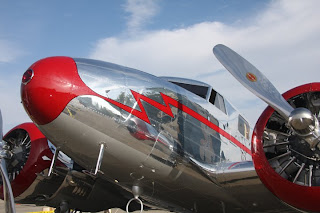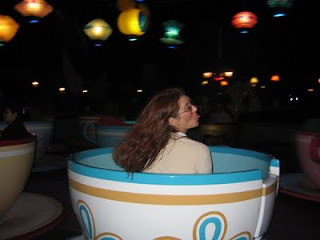 Probably the second most memorable End of Runway experience I had involved the Convair F-106 Delta Dart, similar to this Dart that I shot at Edwards AFB in 1997. But before I go into that, a couple of words on this particular airplane.
Probably the second most memorable End of Runway experience I had involved the Convair F-106 Delta Dart, similar to this Dart that I shot at Edwards AFB in 1997. But before I go into that, a couple of words on this particular airplane.
Back in the mid-1990s, the first of the great hunts was on for the successor to the Space Shuttle. Not only was NASA involved, but smaller companies began the first steps into looking at a low-cost private enterprise launch system. Kelly Space and Technology advanced the idea of a towed two-stage-to-orbit format. The greatest amount of energy is expended in vertically lifting a rocket and its payload off a pad and into the heavy, lower atmosphere before it gains enough speed and altitude to achieve orbit. Kelly proposed using a conventional runway to tow a rocketplane to a high enough altitude where it could cut loose from the tow aircraft, ignite it's engine(s) and go into orbit with less expenditure of on-board fuel. This would allow use of a smaller, lighter vehicle than would otherwise be needed.
The F-106 pictured above was the guinea pig proof-of-concept airframe. The tow aircraft was the C-141 Starlifter, seen behind the 'Six. Tests were successfully conducted, but the concept went nowhere - like most of the replacement ideas between the shuttle Challenger accident and the present day. Regardless, the Dart achieve one more distinction in its long and glorious career. The F-106 still holds the official closed-course single turbo-jet engine aircraft speed record at 1,525.95 mph (Mach 2.31) at 40,000 ft over an 11 mile straight course (www.f-106deltadart.com). The airplane was a thoroughbred of the highest order!
Which brings me to my second most memorable EOR. I should note it is second only because the Red Flag experience related in an earlier post had considerably more aircraft involved. But I digress....
The California Air National Guard flew the F-106 for many years out of Fresno (194th FIS - Fighter Interceptor Squadron). For a period of time in the late 1970s and early 80s, the squadron adorned their tails with the very colorful California flag motif, complete with Grizzly Bear. A sample of the tail is show below.

Chong collection - photographer unknown
In 1978, Van Nuys Airport held an airshow. Since it was also a Cal Air Guard base, the 194th sent down one of its aircraft for the event. I was participating in a model display with IPMS (International Plastic Modelers Society) Space Park, the chapter I belonged to at that time, in one of the hangars. Among the models I brought was a 1/72nd scale California flag-tailed F-106. The pilot happened to wander through the hangar, saw my model and proceded engage me in a long conversation. It turns out he was a modeler, too, and he was building Soviet aircraft to display at the squadron ready-room as identification tools (nice excuse). After our chat he went on his way.
When the show closed, we stayed after the crowds were dispersed to pack our models and clean up our area. The pilot showed up again and asked if I wanted to sit in the cockpit of his airplane. It took me all of a New York-second to say "Yes!" So out we went and I got to sit in a live jet (see photo below - yes, I was thin once and hadn't grown the mustache yet).

Photo by Craig Kaston
I realized in retrospect that I was sitting on a live ejection seat as well. It's a good thing I knew enough not to pull any funny yellow-and-black striped handles. Ejecting out of a parked airplane is considered bad form.
Unfortunately, I was shooting negative film in those days. Even more unfortunate, my camera decided to jam at that moment as I was taking pictures from inside the cockpit, so I have nothing of my own as a record of the moment. My thanks to Craig for getting a shot of me with a Cheshire Cat grin so I can prove it did happen.
The view from the cockpit looking forward was not as good as I thought it would be. That large center frame makes a big difference. Also, I was impressed by the fact that I had to really turn my head to see the wings. The sensation must be like sitting out on the tip of a spear. I imagine it's a really neat feeling!
All too quickly, the moment was over. But the best was yet to come. In those days the show aircraft could launch out of Van Nuys that night to transit to their home base. We got to stick around to see that, and from the EOR.
It was twilight before the Dart lined up for take-off. Apparently there was a problem with the control tower or the airplane, but the pilot was behind schedule and getting miffed about it. When he got the green light, he wasted no time. He spooled up his Pratt & Whitney J75 engine and kicked it into afterburner. Afterburning is where raw fuel is sprayed into the exhaust flame, where it ignites, giving the aircraft a powerful boost in thrust. Normal military power on the J75 was 17,200 lbs static thrust; it becomes 24,500 lbs s.t. with afterburner. In short, you can go instantly much faster, but at a huge cost of fuel consumption, limiting your range. But it is really cool to see up close!
When the pilot lit his burner, blue flame roared out of his exhaust nozzle like a 20 foot long blow torch. It glowered in the twilight like an angry beast as he held his brakes for several moments. Then he began his roll. He shortly rotated his nose up, but kept his main gear on ground. He continued forward in that attitude while the tongue of flame scorched the runway behind him for several long moments before he finally lifted off. He leveled out, picked up speed until he reached the end of the runway, then pulled into a vertical climb. We watched that fireball all the way up to about 10,000 ft before he cut off his afterburner. It was loud and spectacular! We only hoped he had enough gas to make it to Fresno after that display.
Not to be outdone by a Air Guard ADC guy (Air Defense Command), two TAC (Tactical Air Command) crews in their McDonnell Douglas F-4 Phantom IIs did the same thing, but in a tandem take-off! That's two G.E. J79s per airplane, for a total of four 17,845 lbs s.t. engines roaring down the runway and torching it even more thorougly than the F-106...but for some reason, the Phantoms, while exciting to watch, didn't match the "wow" factor of the Dart. (It's probably because they didn't go vertical and climb to 10,000 on AB.)
It was impressive enough for the local population, though. We overheard some tower to airport ops radio traffic after the launch of the Dart and Phantoms. It went something like this:
Tower: "We're gonna get some noise complaints on that one."
Ground: "Roger that. Tell 'em it was a Lear Jet."
 We went to the Huntington Library and Gardens last Saturday. Three or four times a summer they hold a "members only" series of evening events and this was one of them. While most people flock to the free concert, we made a beeline for the Chinese Gardens. Our journey was worth it; not only was the Golden Hour in effect, but a beautiful white egret decided to go hunting for dinner near our location. I managed to get several shots of him with the 75-300mm zoom telephoto (rough equivalence of about 420mm with the digital). These are some of the results. Hopefully Tina will be inspired to make some paintings from them. I especially like the back-lit image above. It really glows.
We went to the Huntington Library and Gardens last Saturday. Three or four times a summer they hold a "members only" series of evening events and this was one of them. While most people flock to the free concert, we made a beeline for the Chinese Gardens. Our journey was worth it; not only was the Golden Hour in effect, but a beautiful white egret decided to go hunting for dinner near our location. I managed to get several shots of him with the 75-300mm zoom telephoto (rough equivalence of about 420mm with the digital). These are some of the results. Hopefully Tina will be inspired to make some paintings from them. I especially like the back-lit image above. It really glows. 





















